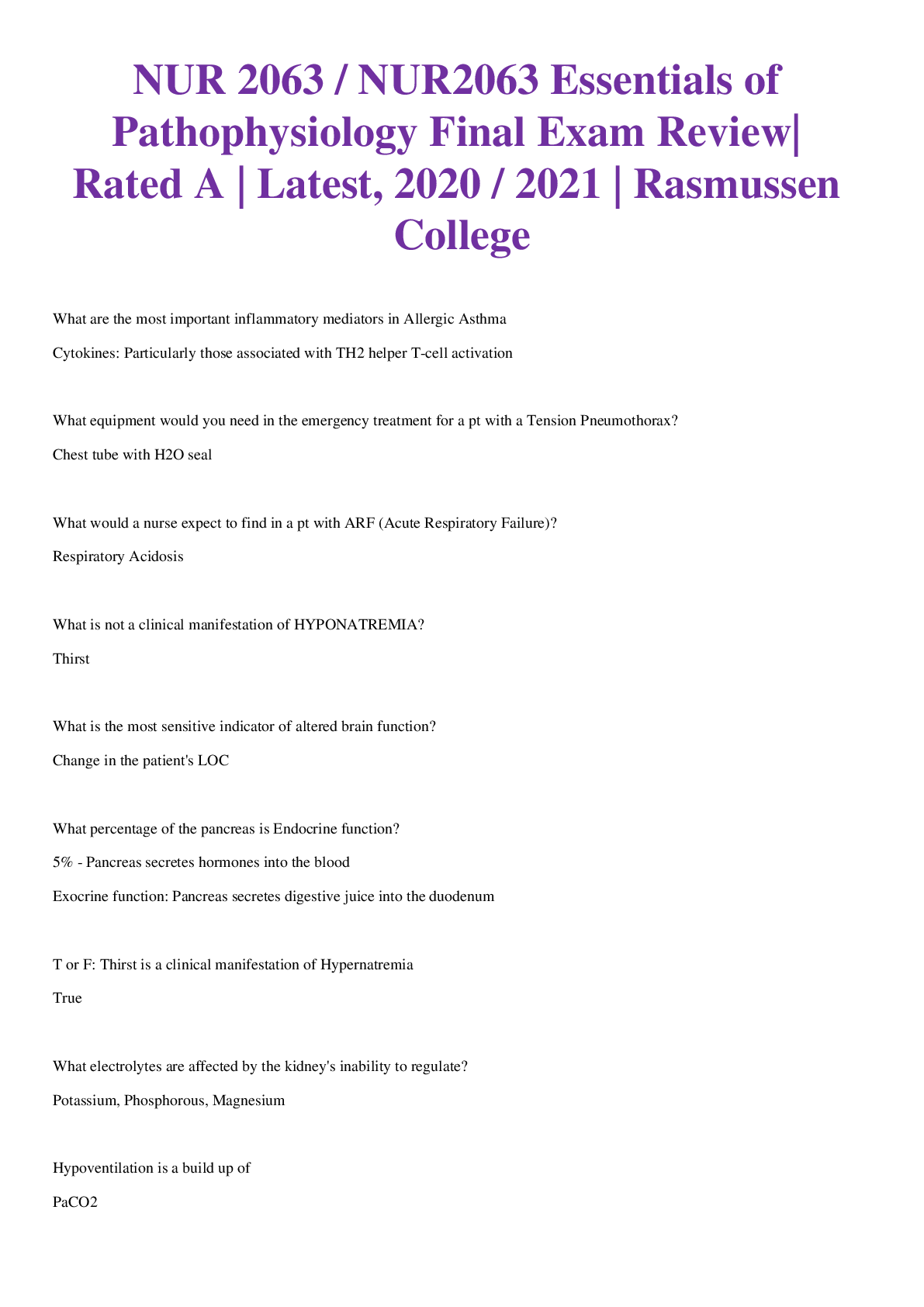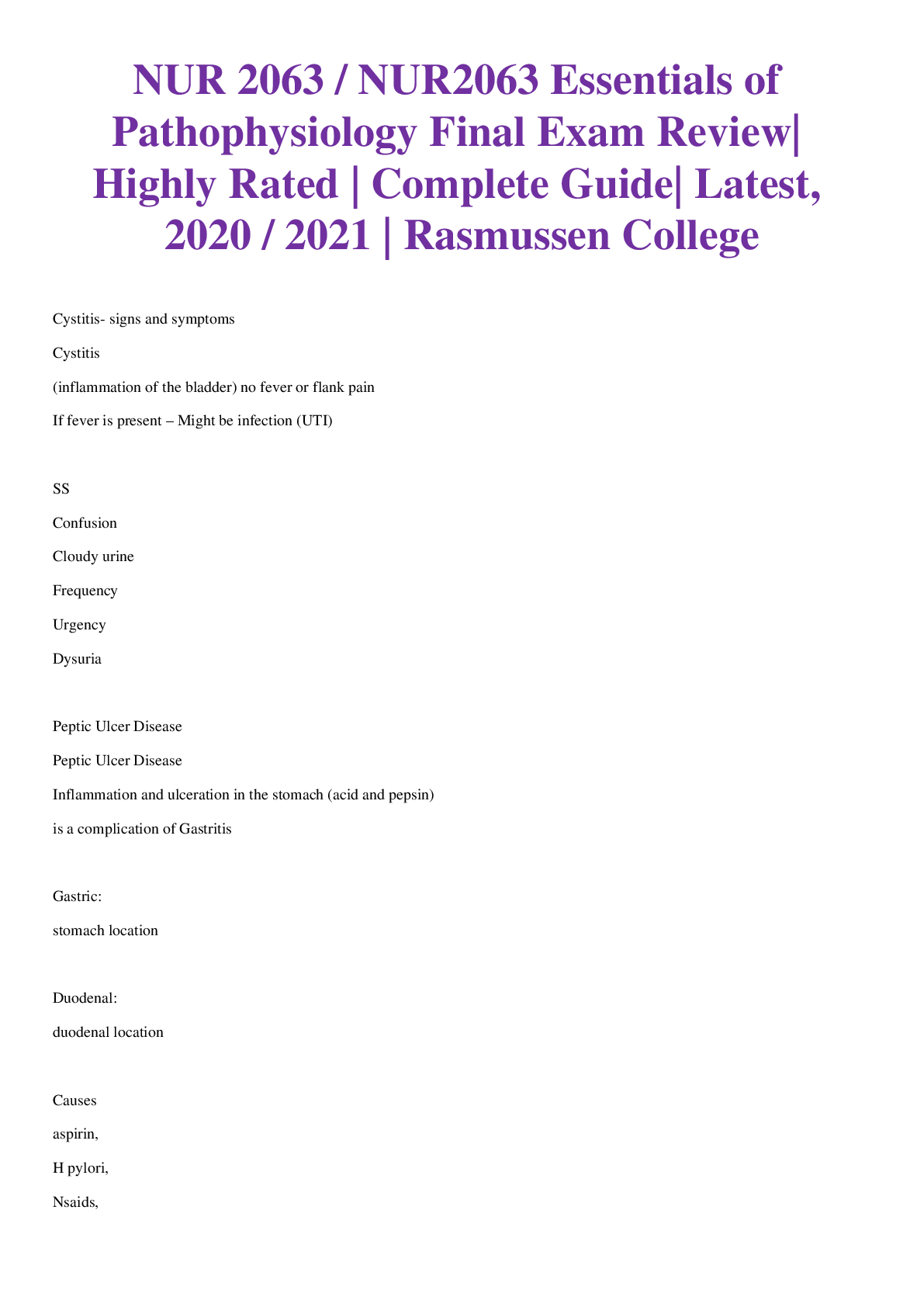*NURSING > EXAM > NUR 2063 / NUR2063 Essentials of Pathophysiology Final Exam Review| Grade A Rasmussen College (All)
NUR 2063 / NUR2063 Essentials of Pathophysiology Final Exam Review| Grade A Rasmussen College
Document Content and Description Below
NUR 2063 / NUR2063 Essentials of Pathophysiology Final Exam Review| Grade A | Latest, 2020 / 2021 | Rasmussen College 1. What are Catecholamines - are neurotransmitters (epinephrine, norepinephri... ne) for fight or flight 2. What is the complication in type 1 diabetes when fats are being broken down for energy? - Diabetic keto acidosis 3. What is the purpose of dialysis for patient with kidney disease? - Filter blood, remove waste, prevents build-up of excess sodium and water 4. What bacteria causes most cases of cystitis? - E. Coli 5. What type of injury classification is injury of the fascia? - Inert soft tissue injury 6. Superficial, partial thickness, blister formation all describe - second degree burns 7. What is a second degree burn? - epidermis and partial thickness of the dermis are involved. - area is painful and blisters are present 8. Gastroesophageal reflux disease (GERD) - is the backflow of gastric contents into the esophagus 9. What is hematuria? - blood in the urine 10. What is pyelonephritis and what causes it? - Infection of the kidneys - caused by UTI; E.coli : ascending Luts infection 11. What are the two main conditions responsible for chronic kidney disease? - Diabetes and hypertension 12. What is the type of incontinence caused by an increase in intra abdominal pressure? - Stress urinary incontinence 13. What is the priority assessment for potassium imbalance? - Look at the heart first; arrhythmias; Kis responsible for muscle contractions 14. Allergies cause high levels of what? - IgE 15. What causes diabetes insipidus? - lack of ADH, excessive water loss through urine 16. What is the difference between type 1 and type 2 mellitus? - Type 1- no insulin production - Type 2- no response to insulin, which later reduces insulin production 17. T/F: Type II DM results in absolute insulin deficiency - False 18. T/F: Type I DM results in absolute insulin deficiency - True 19. What is the impact of a myocardial infarction? - Decreases cardiac output lowered ejection fraction 20. What lung disease causes destructive changes of the alveolar walls and enlargement of the distal air sacs? - Emphysema 21. What is the appropriate nurse interventions for emphysema? - Administer bronchodilators and oxygen, and educate the pt to stop smoking - Teach purse lip breathing; Lung exhalation (smell the flowers; blow out the candles) 22. What is the process of moving air into the lungs called? - Ventilation 23. What is the priority assessment for a patient on a ventilator? - Airway patency 24. Where is the brains respiratory center? - Medulla oblongata and the Pons 25. What is the priority nurse intervention for a large wound? - Apply pressure to stop bleeding [Show More]
Last updated: 1 month ago
Preview 1 out of 22 pages
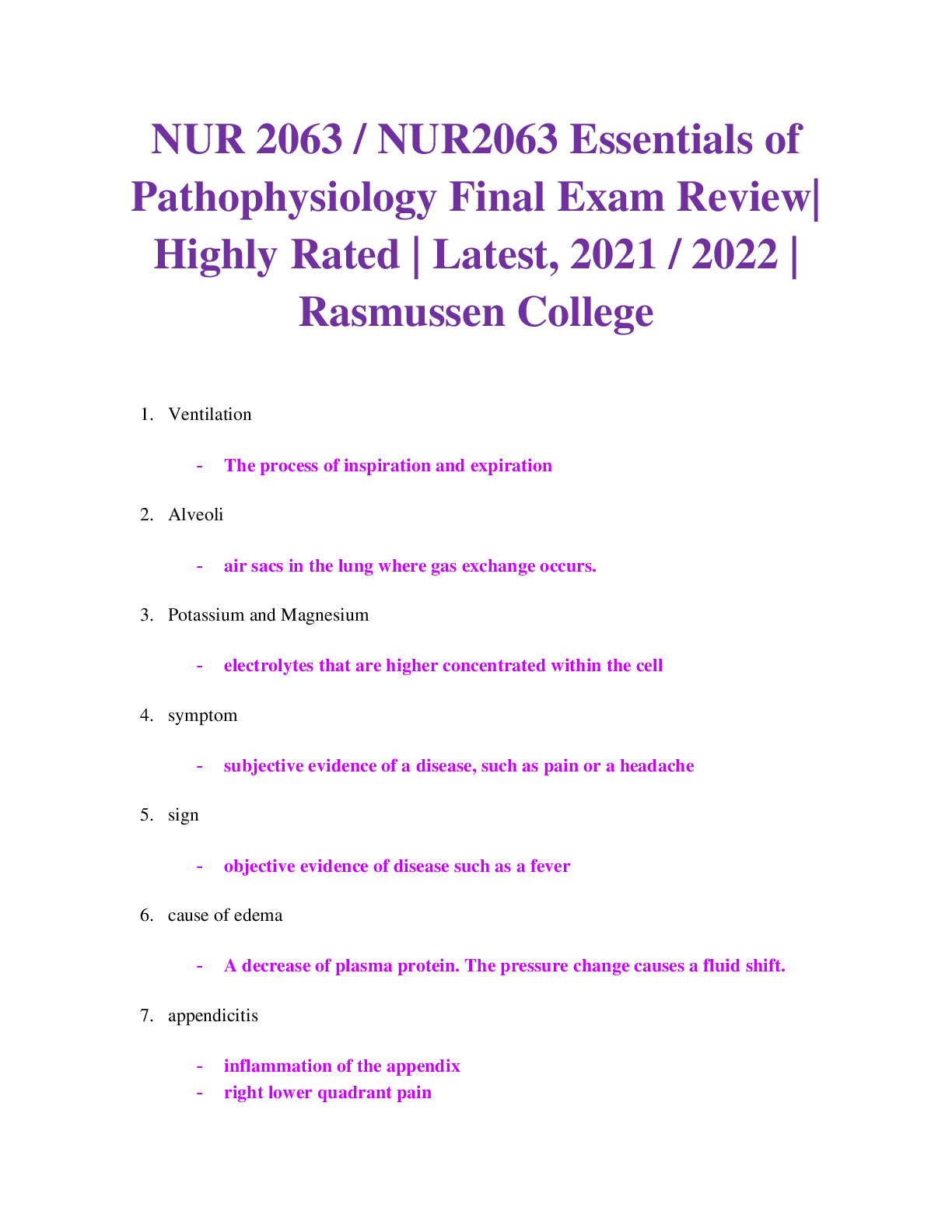
Reviews( 2 )
Document information
Connected school, study & course
About the document
Uploaded On
Dec 04, 2020
Number of pages
22
Written in
Additional information
This document has been written for:
Uploaded
Dec 04, 2020
Downloads
3
Views
161


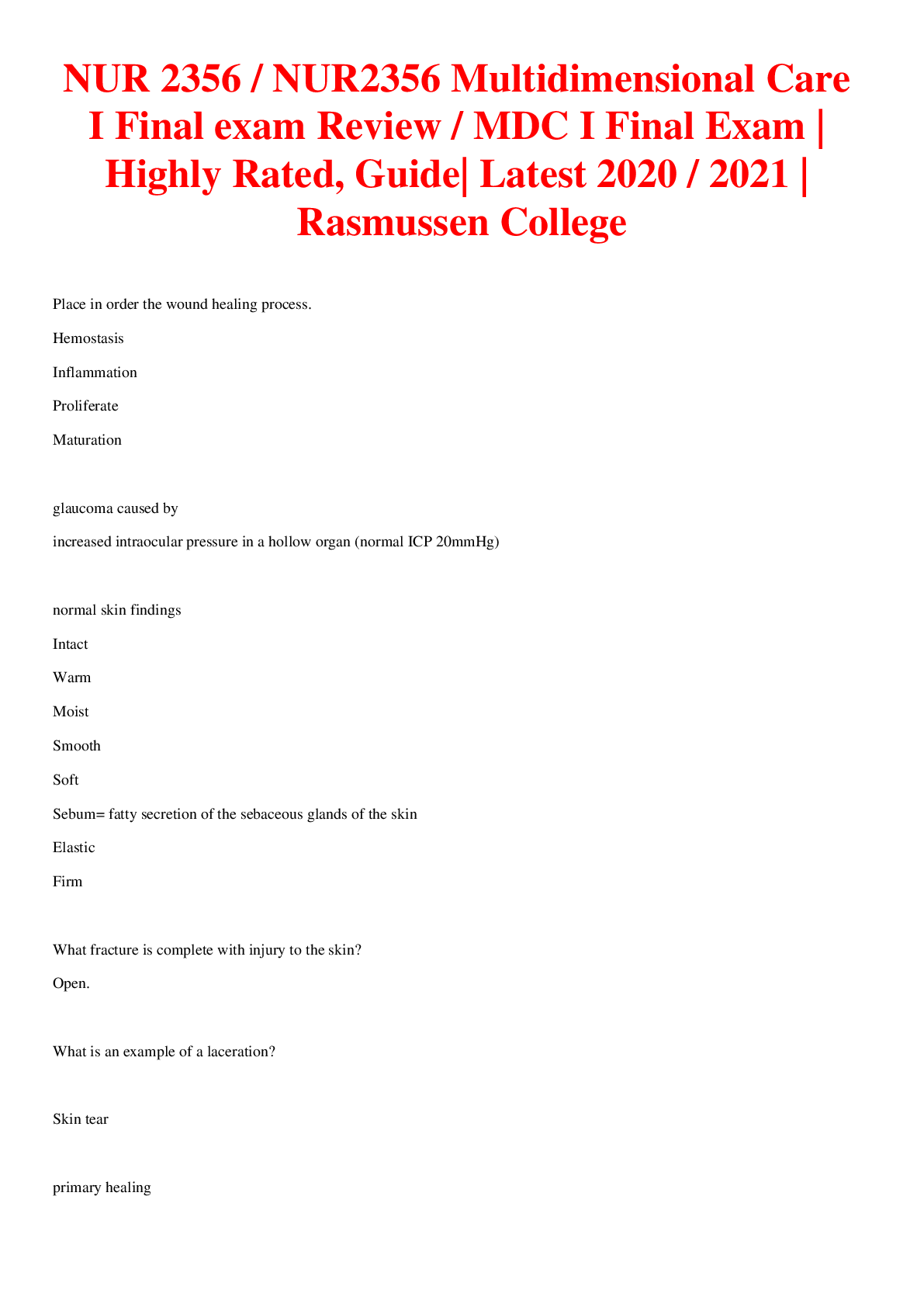
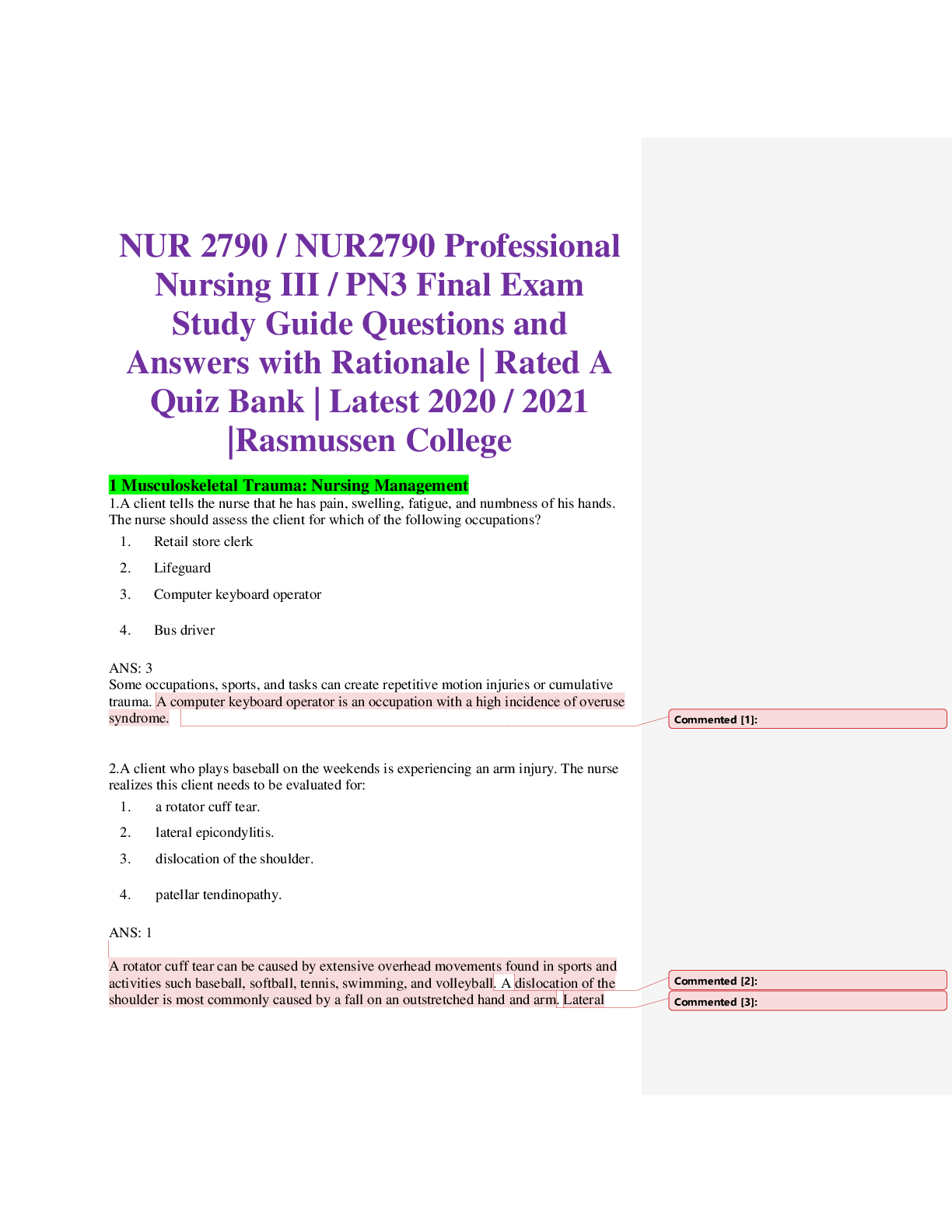
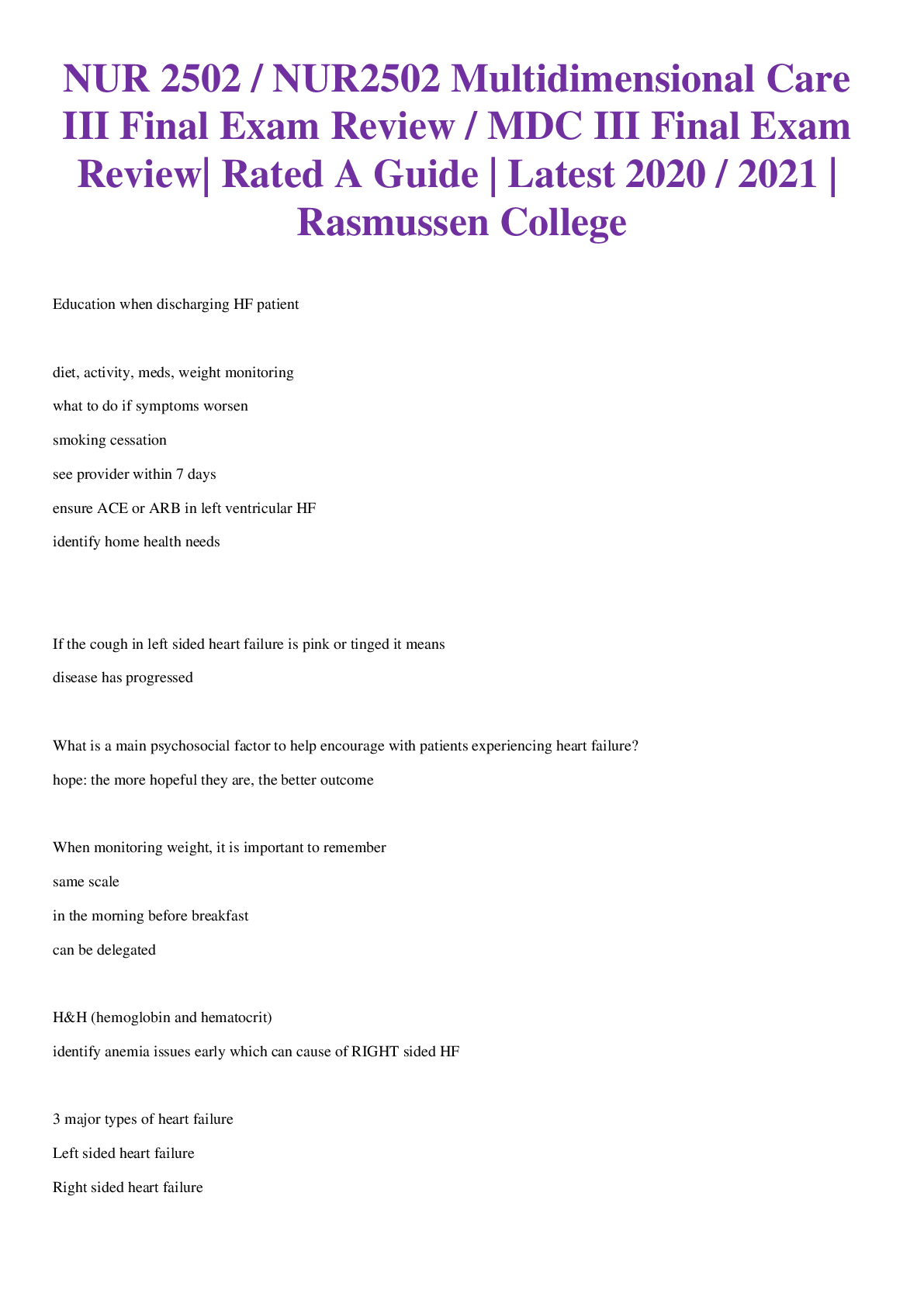
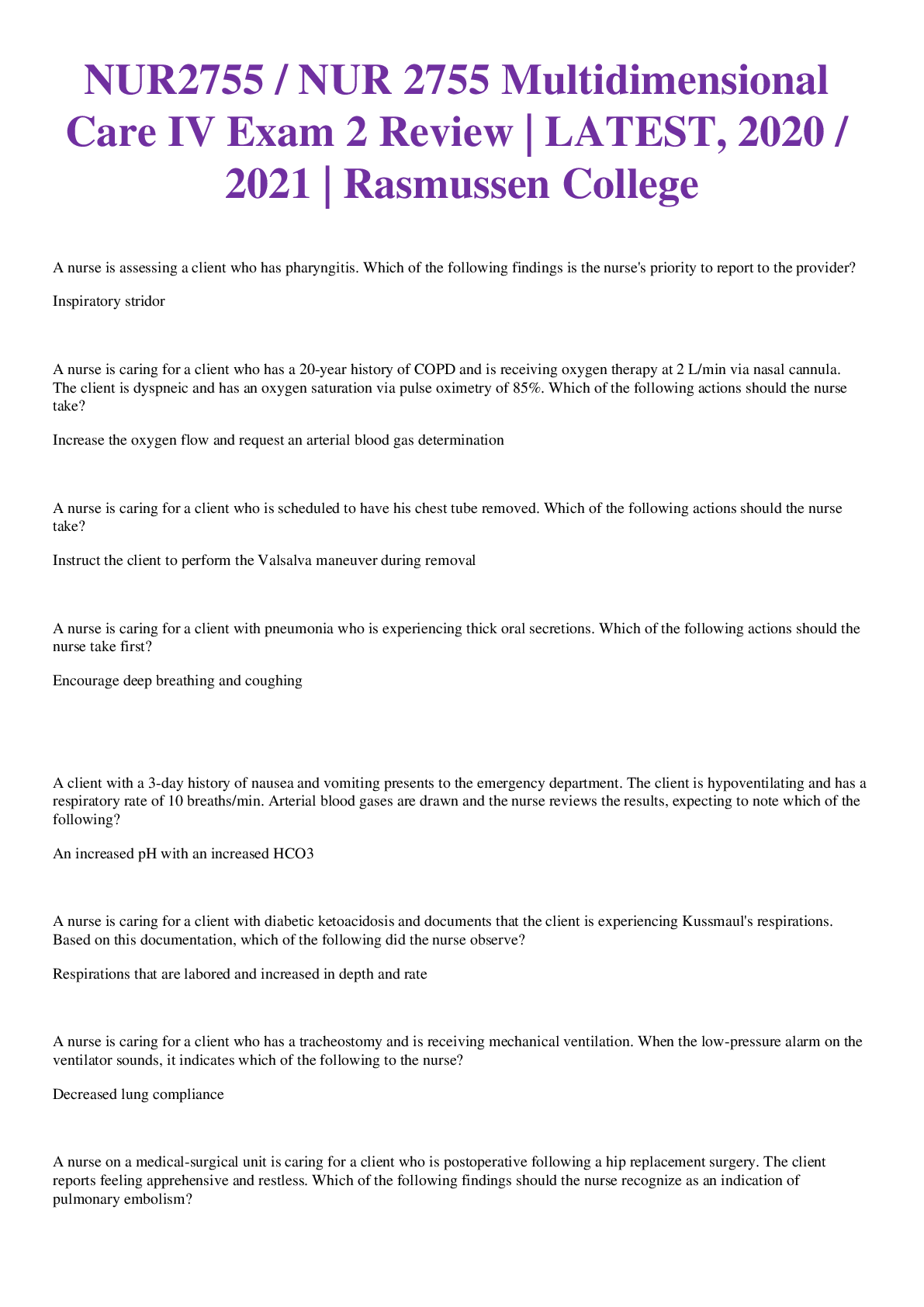
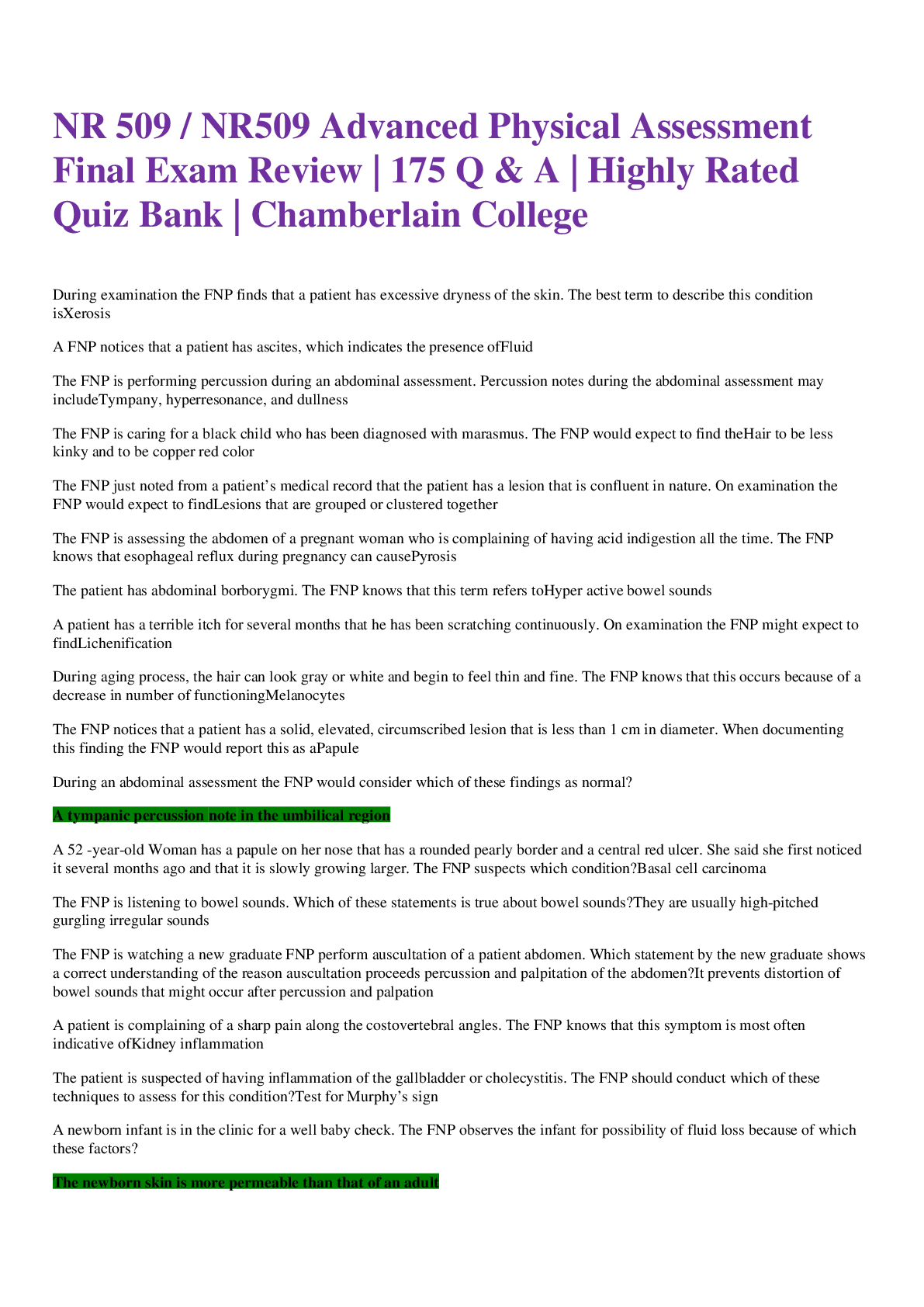
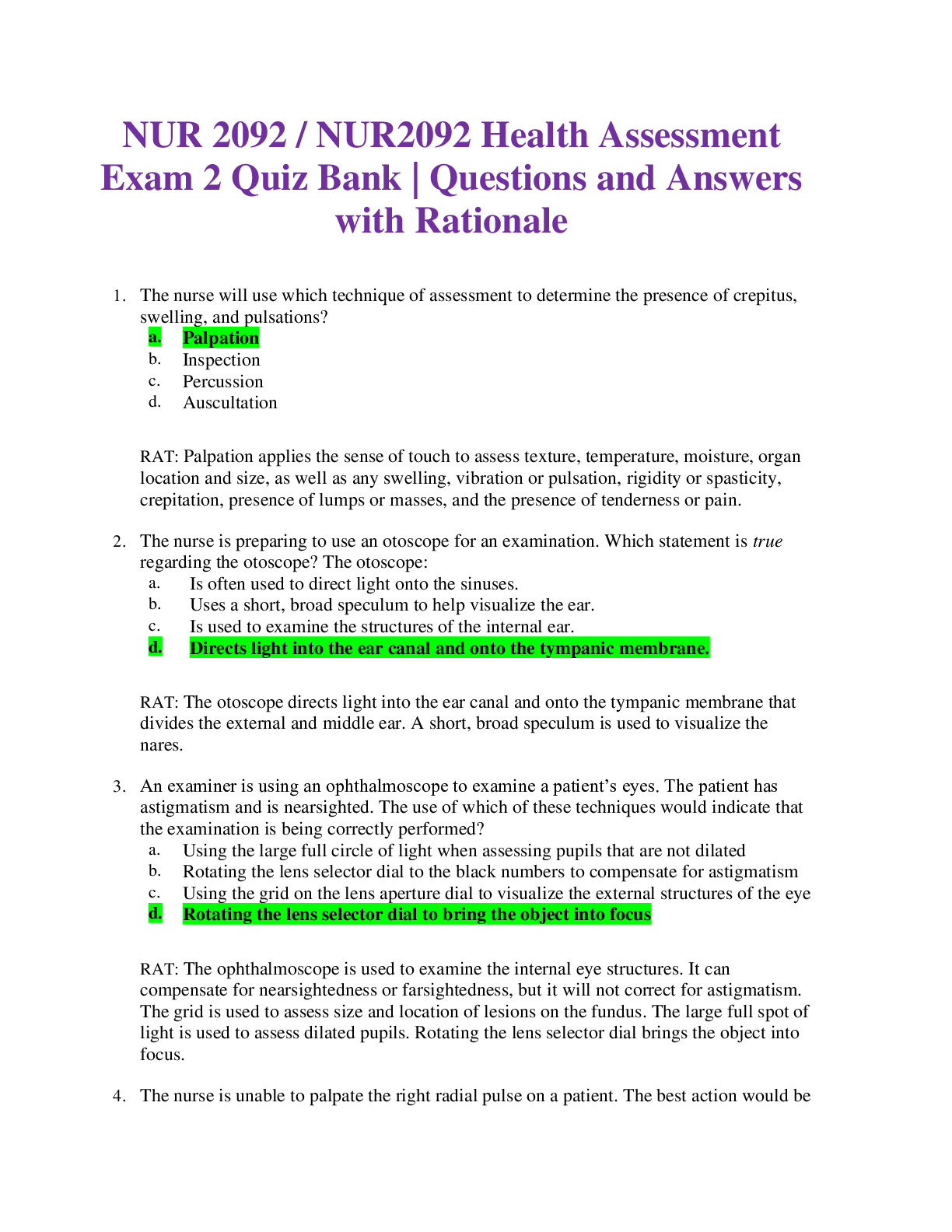
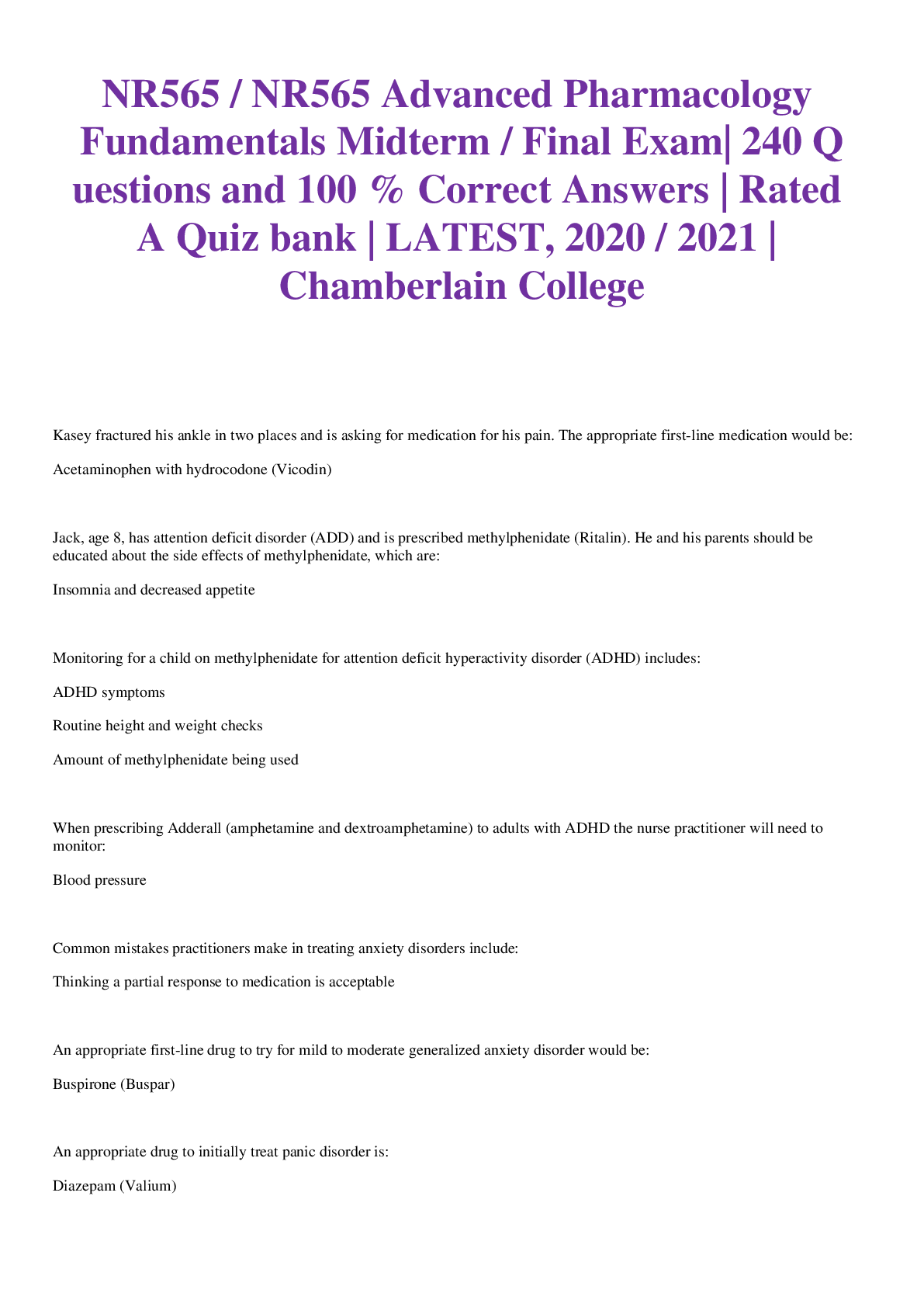
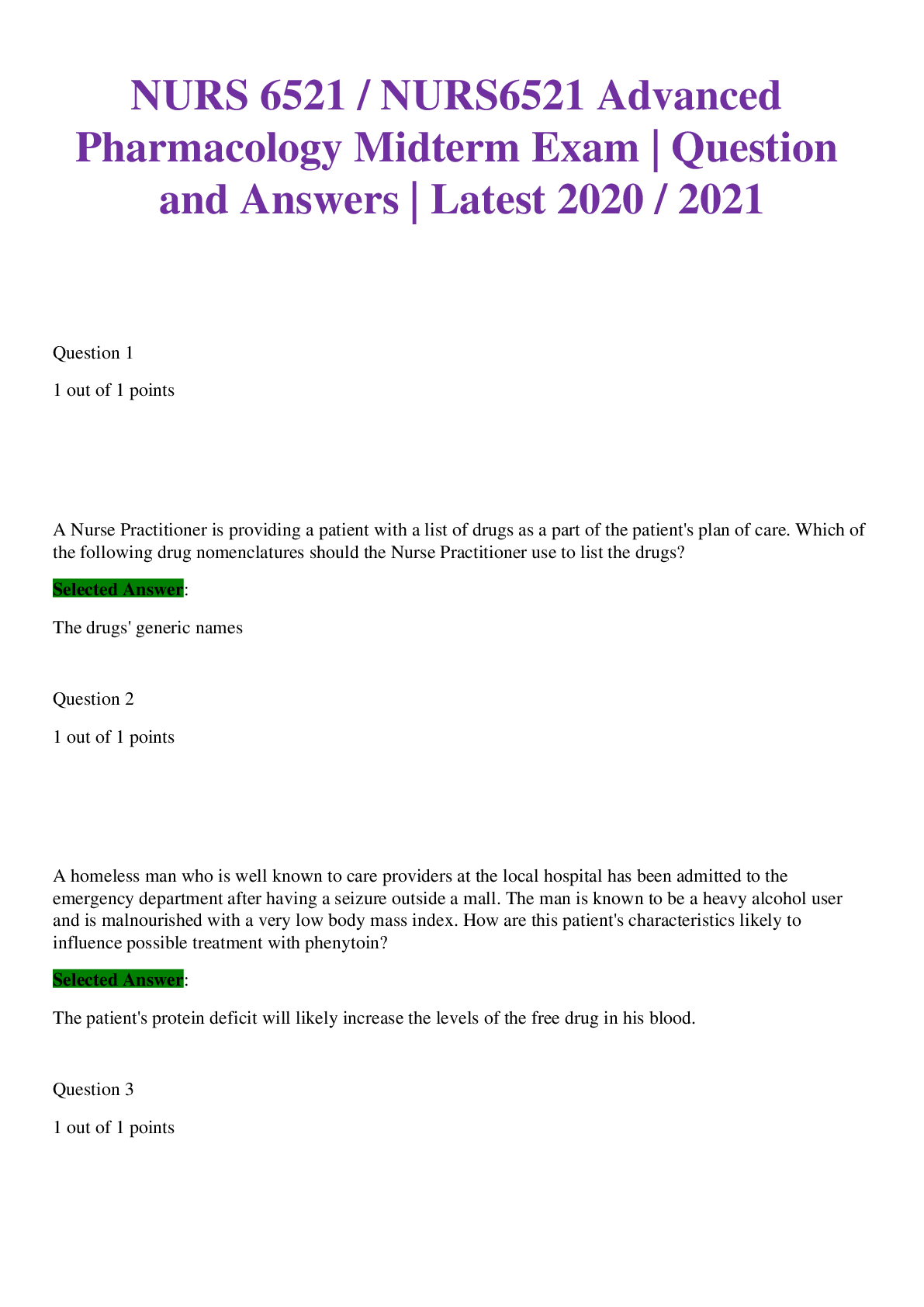
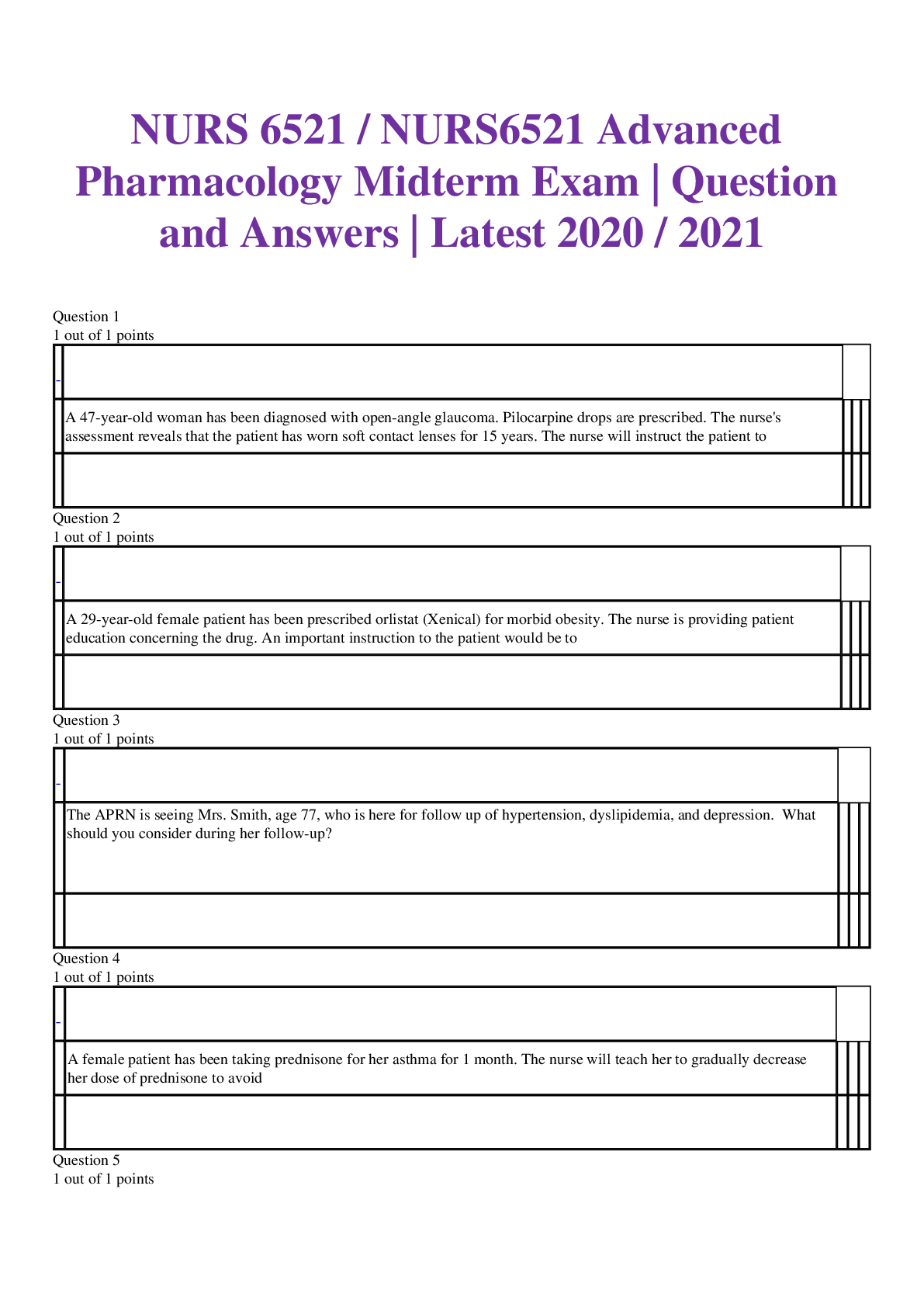
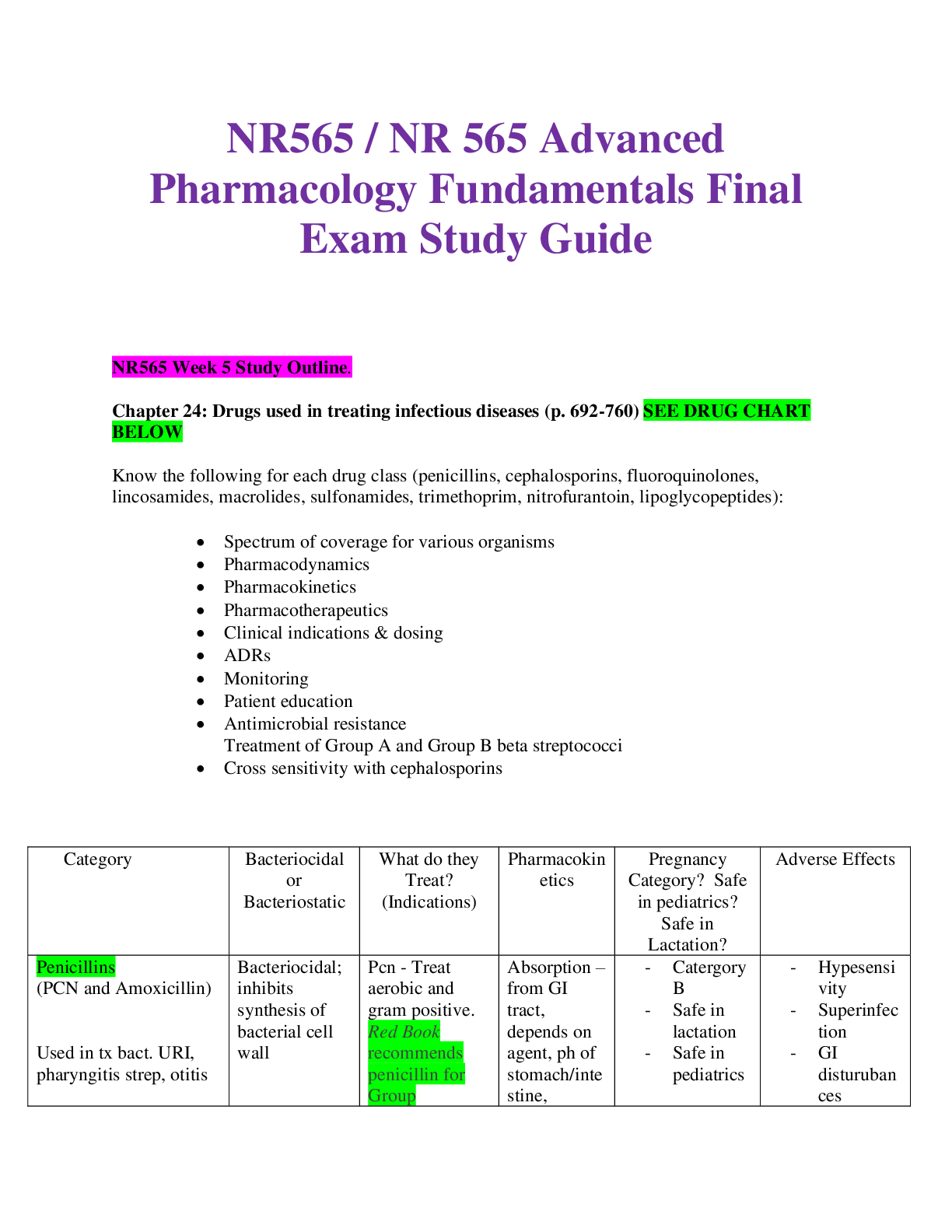
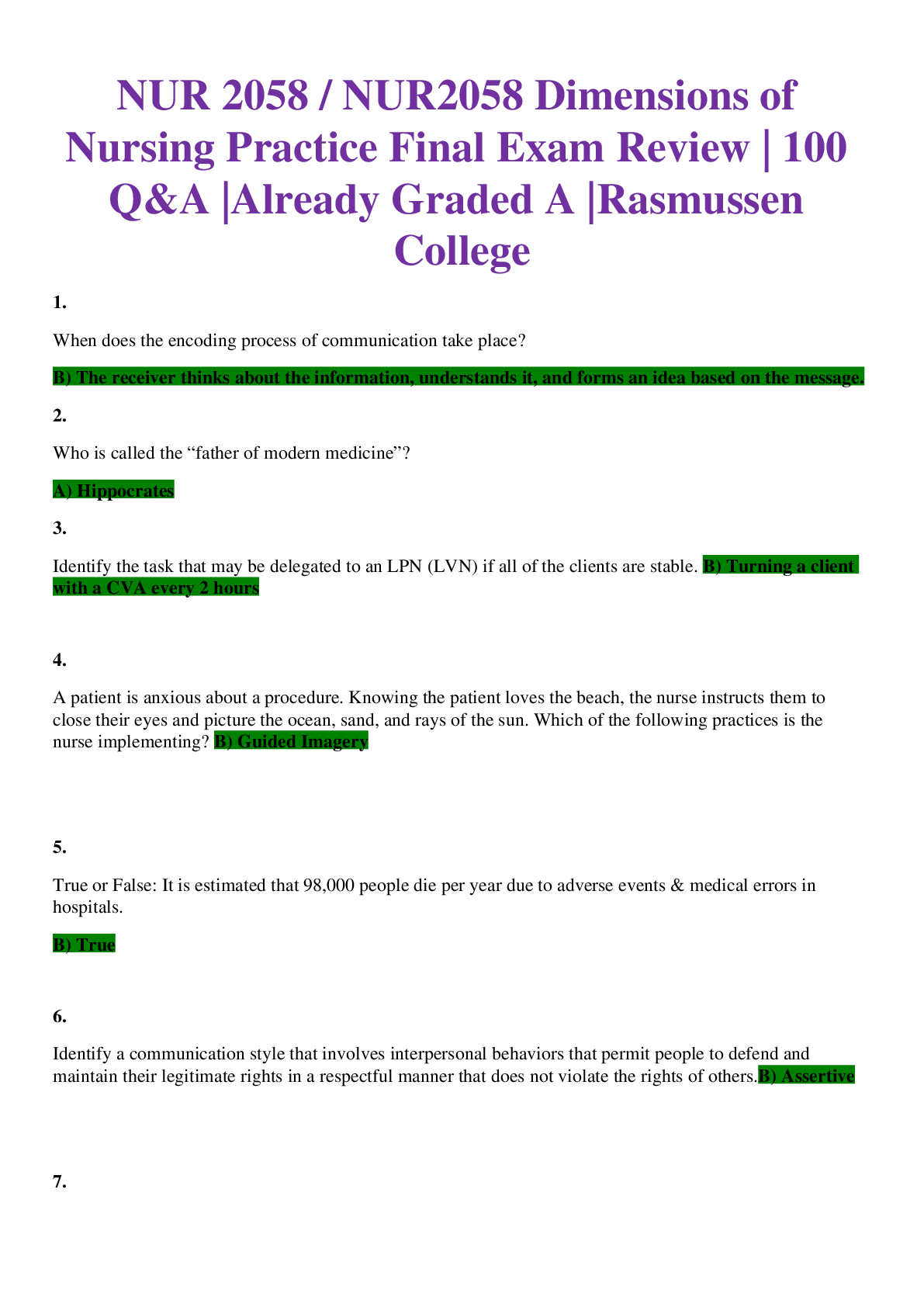
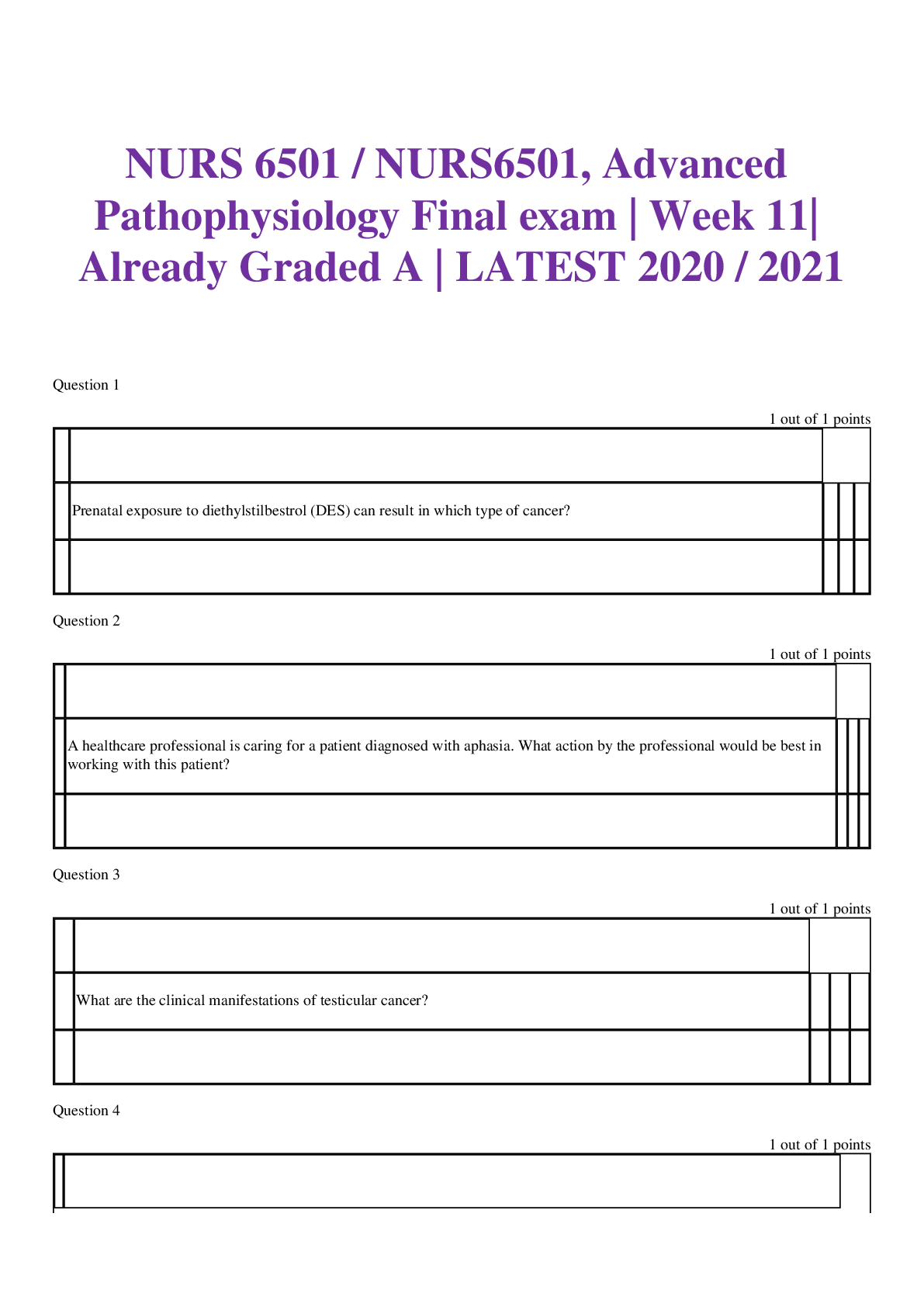
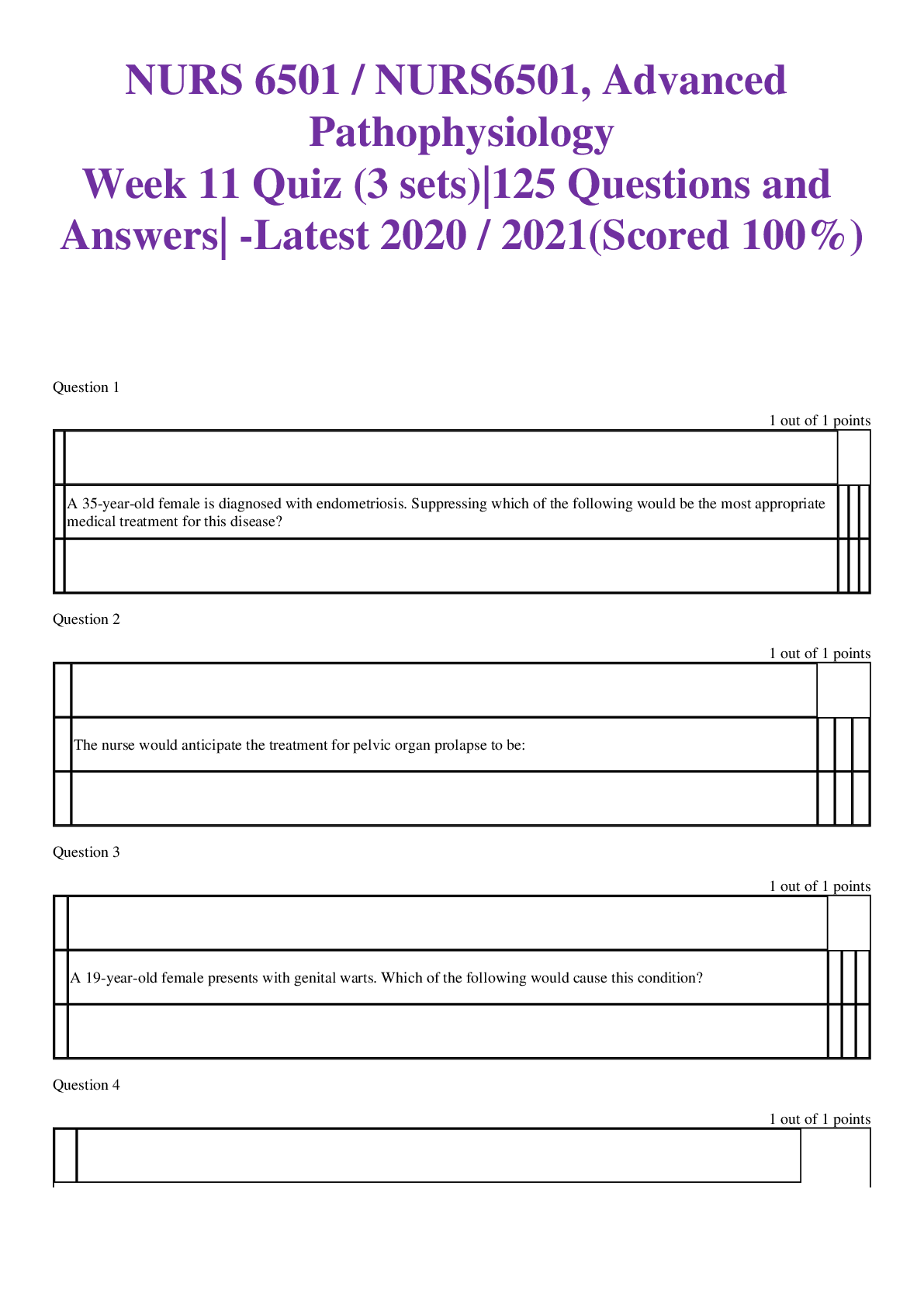

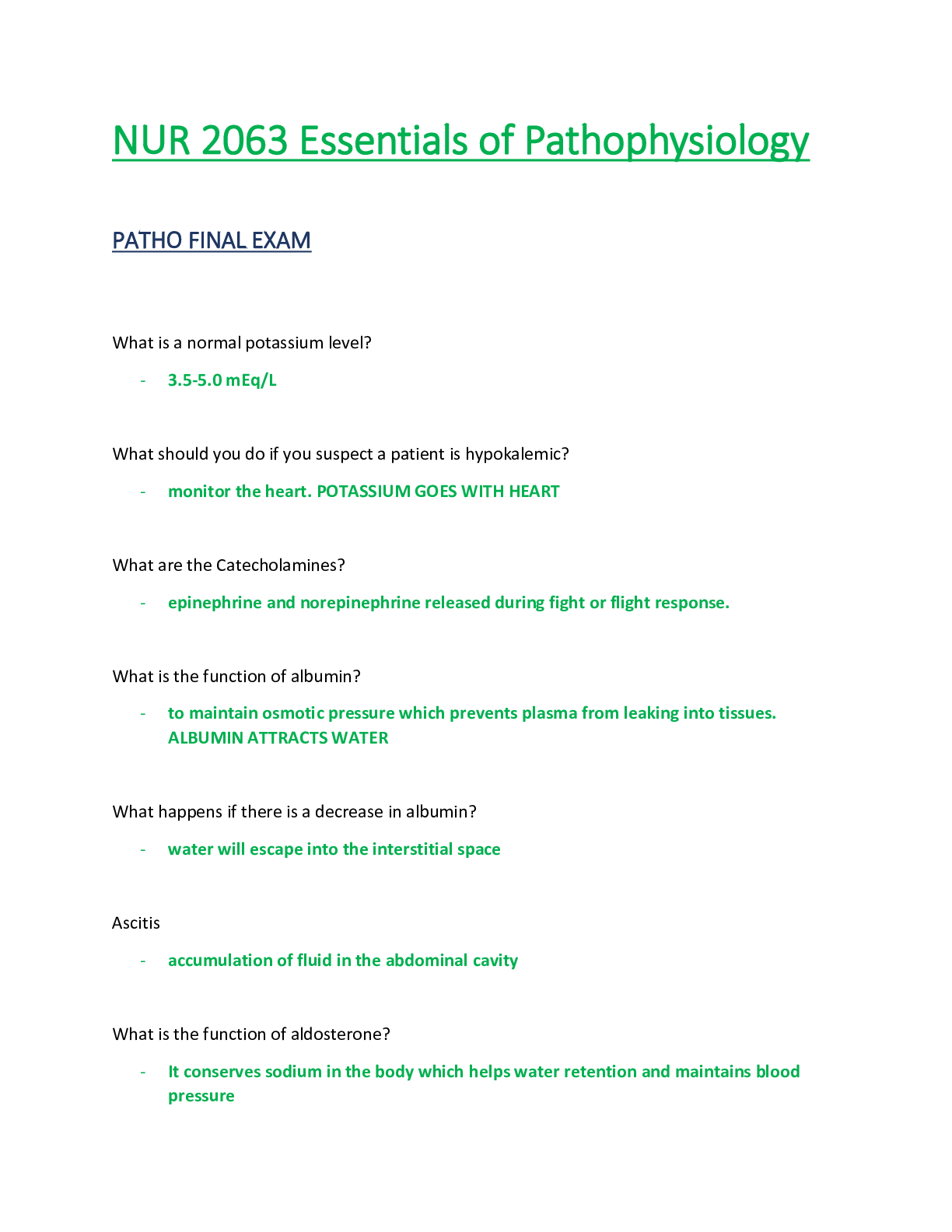
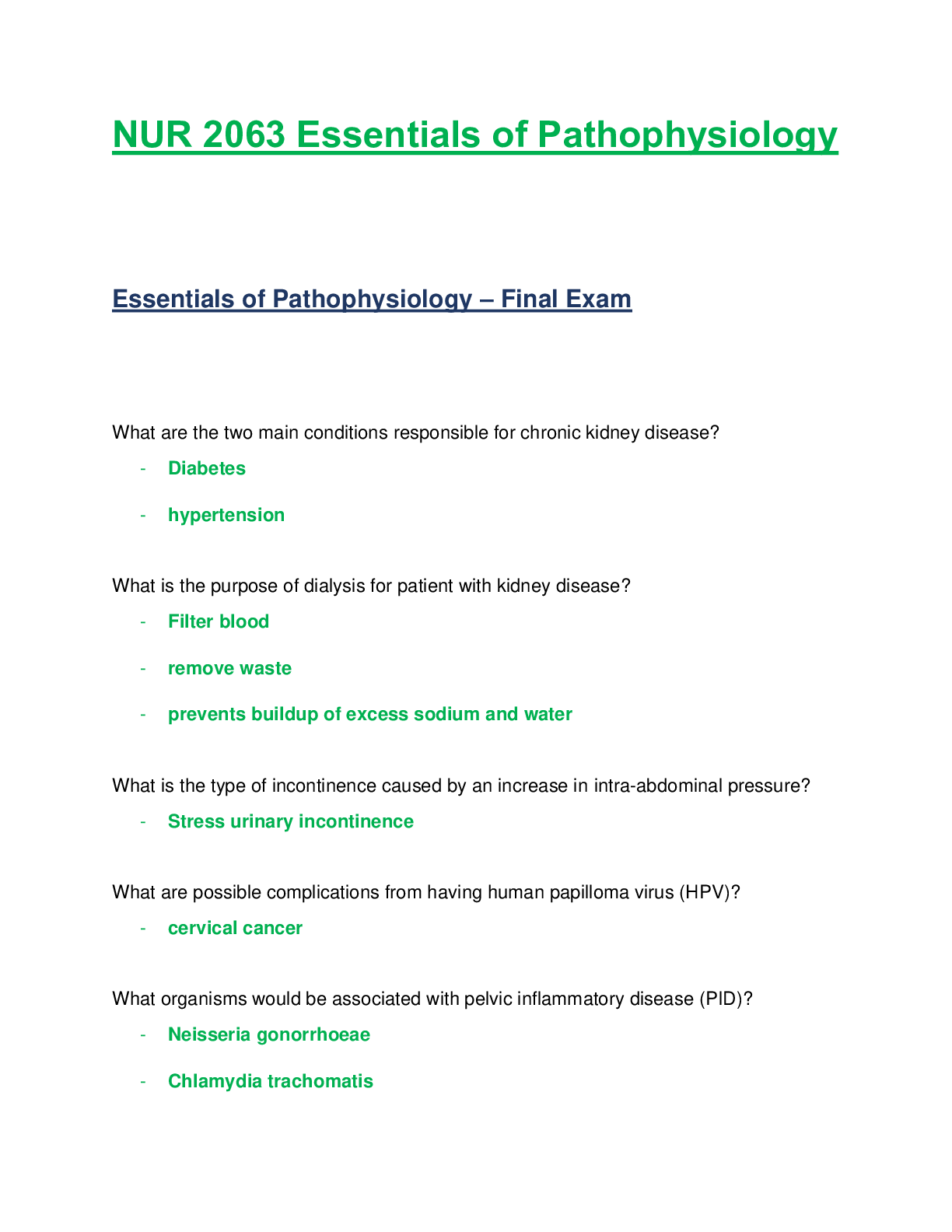
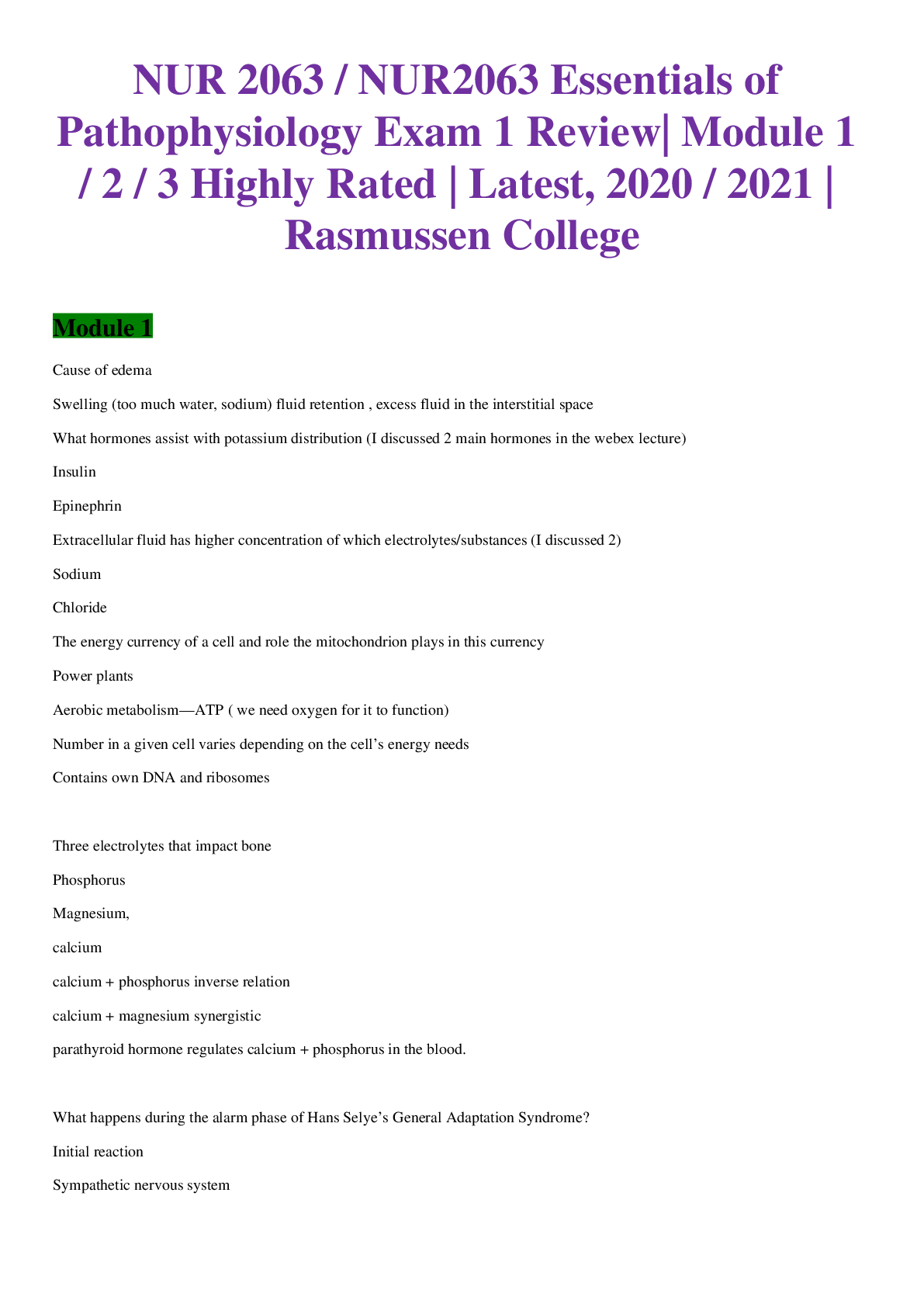
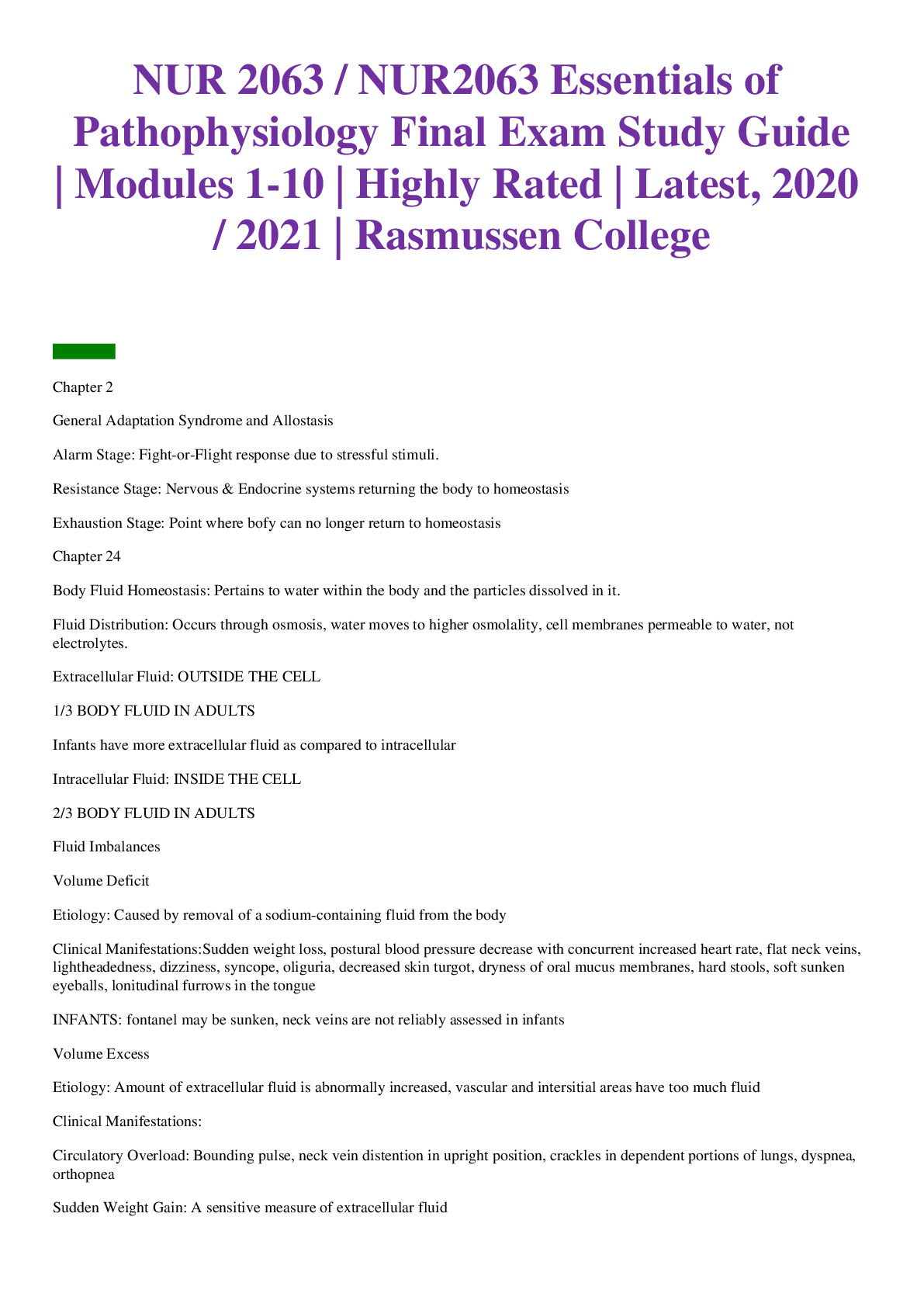


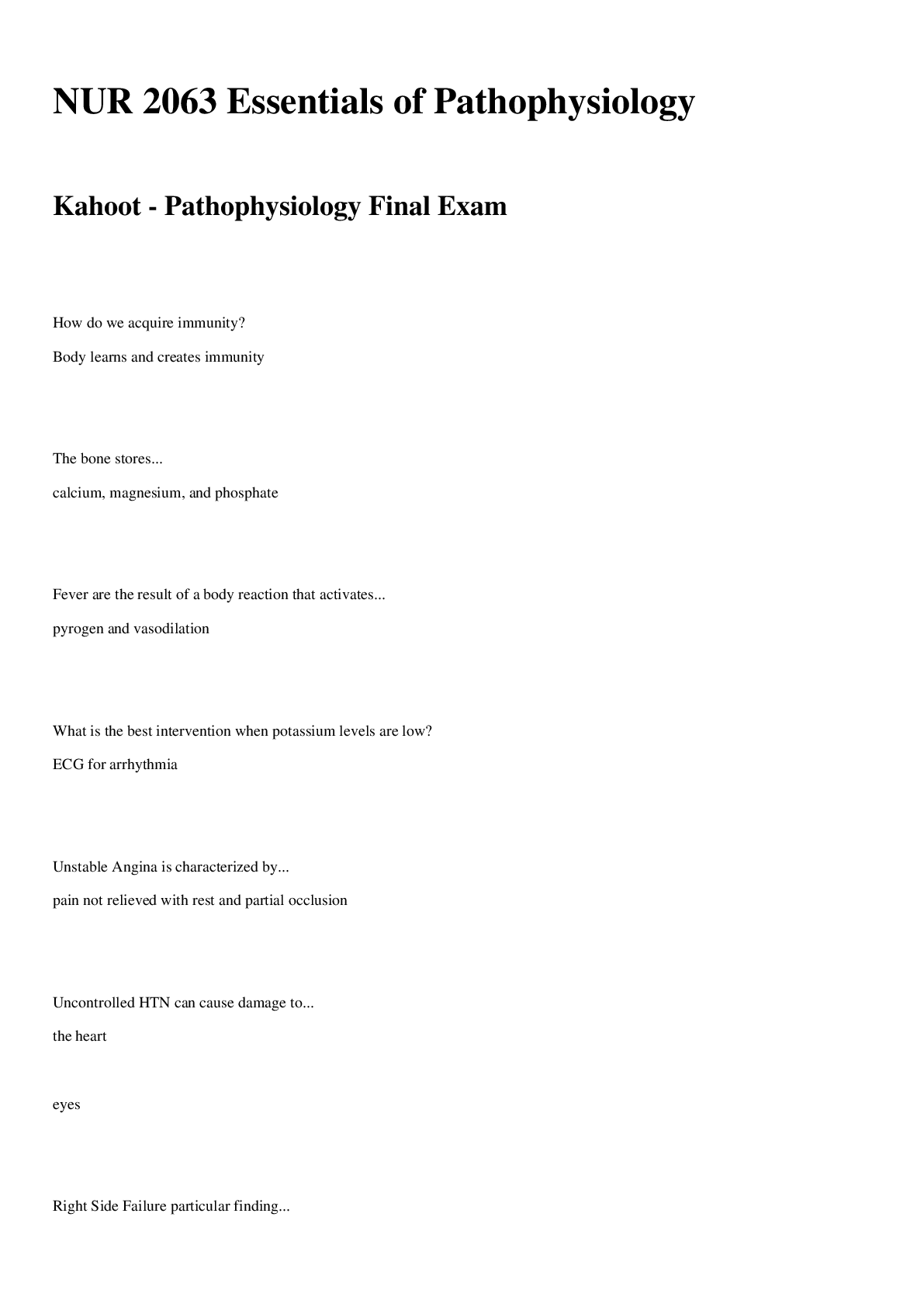
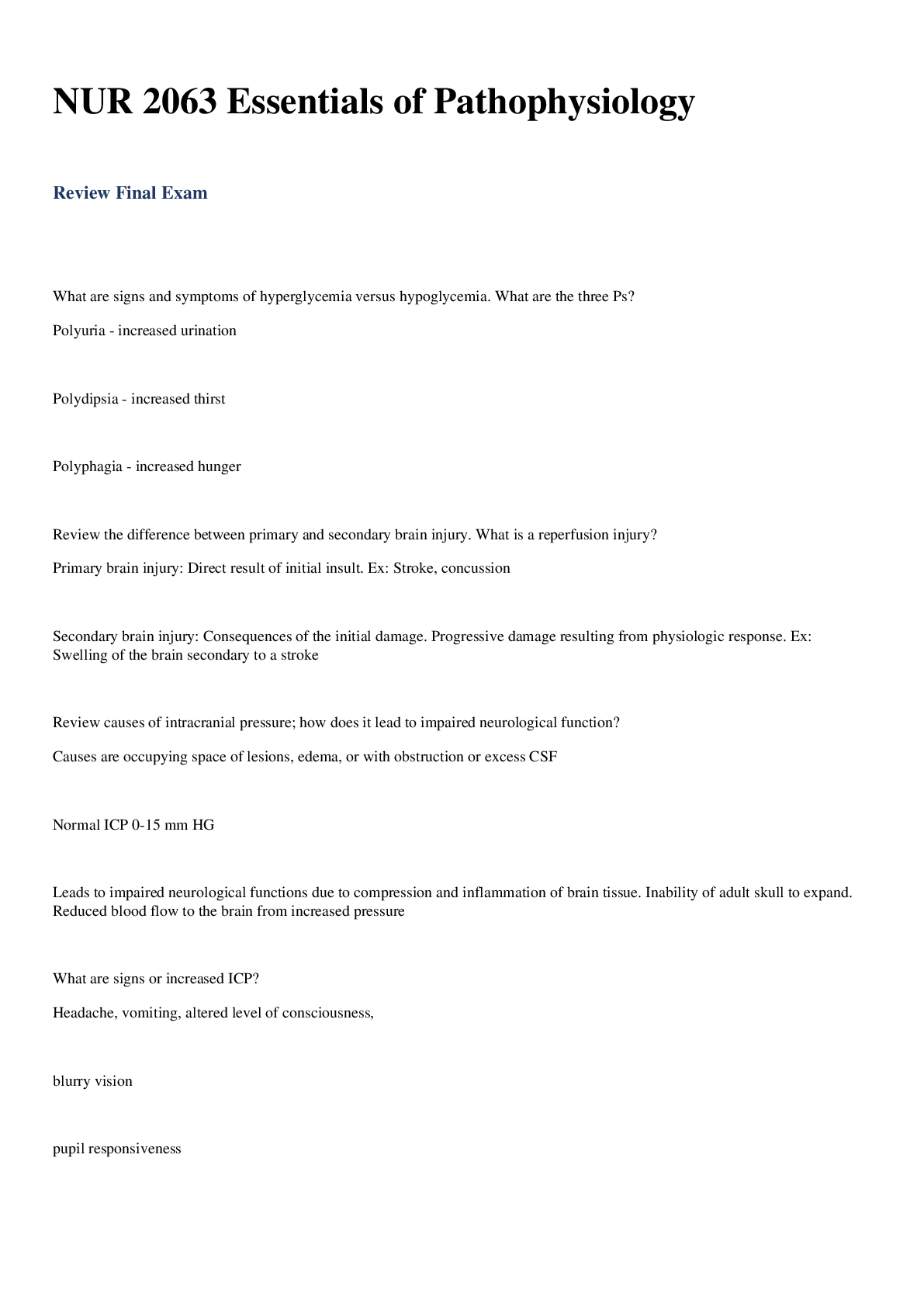


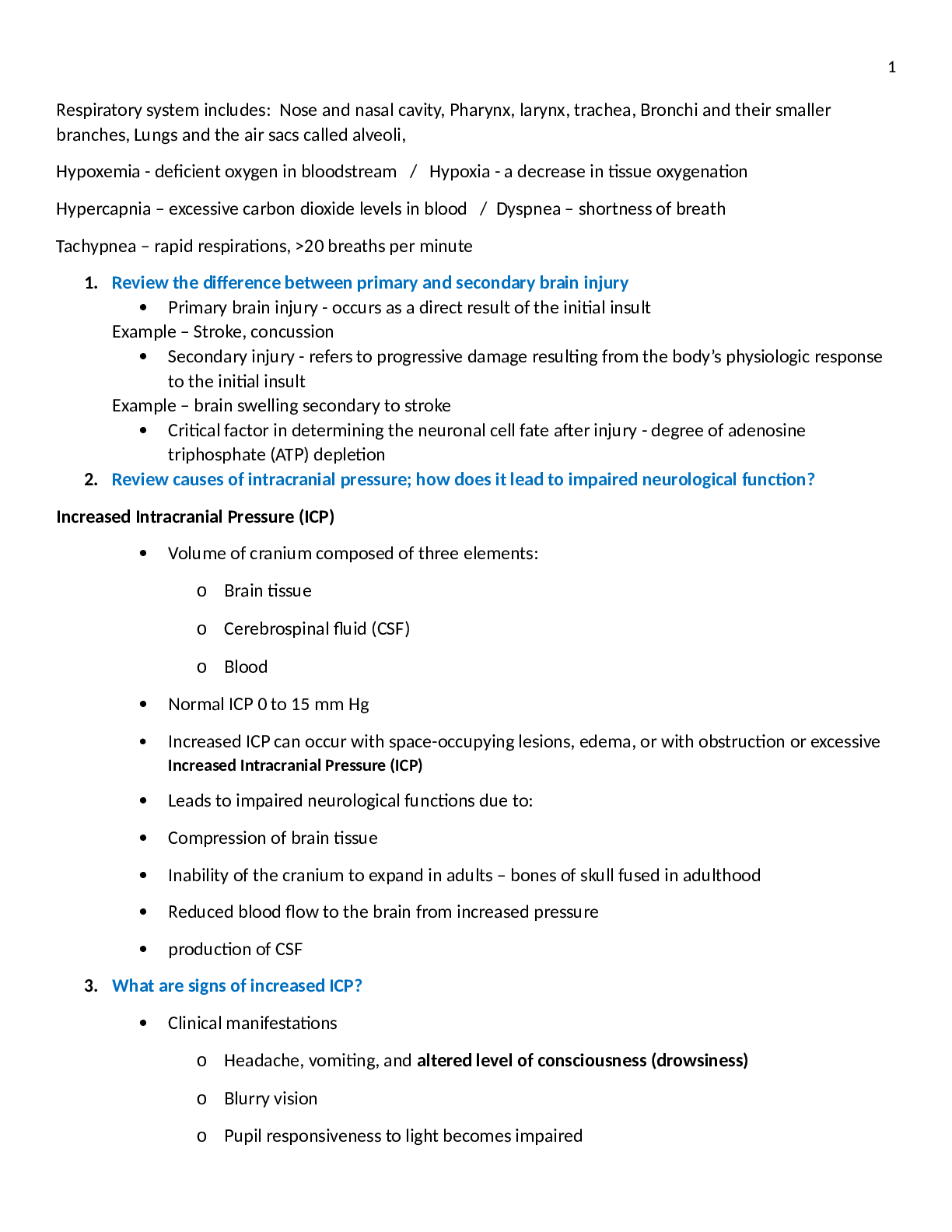
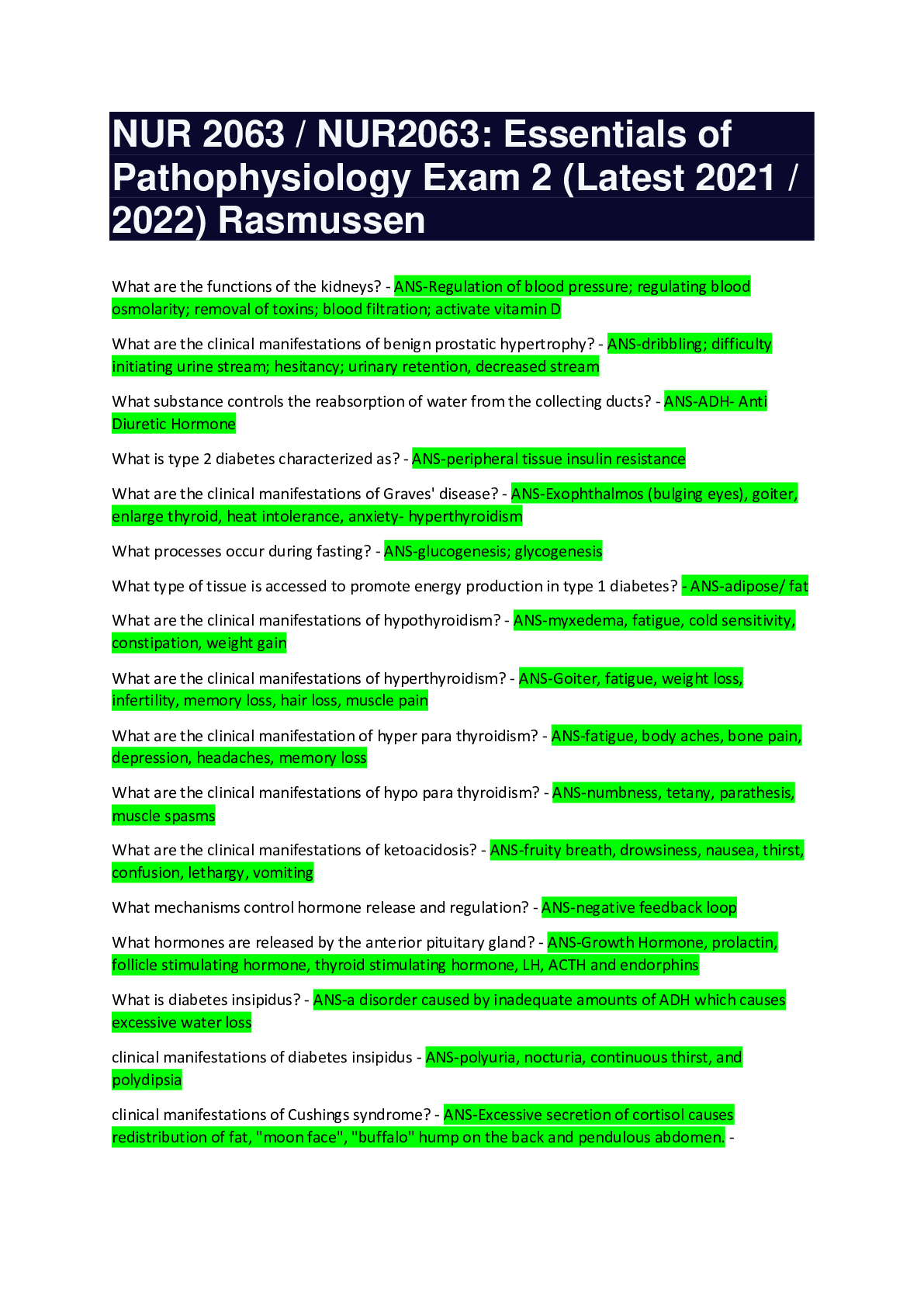

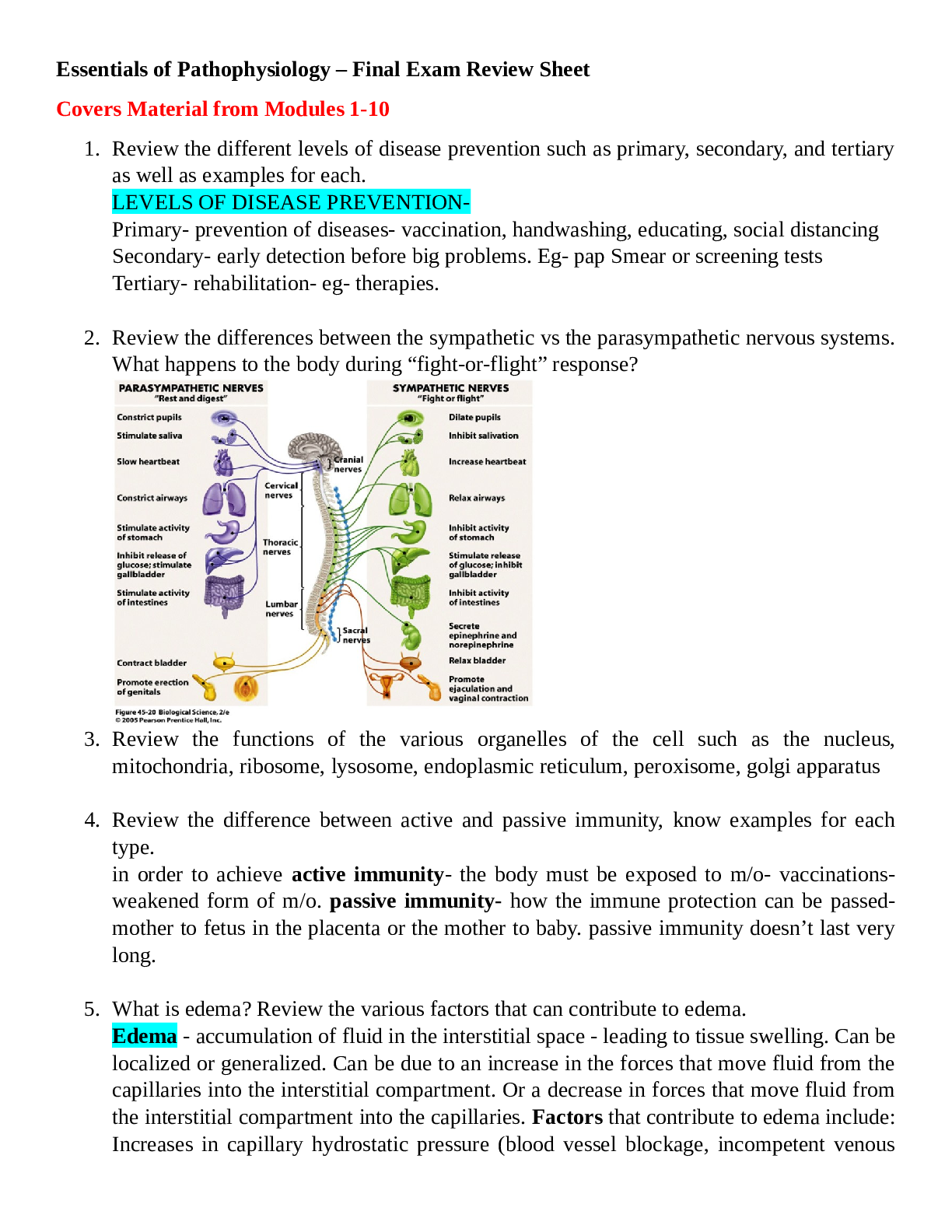
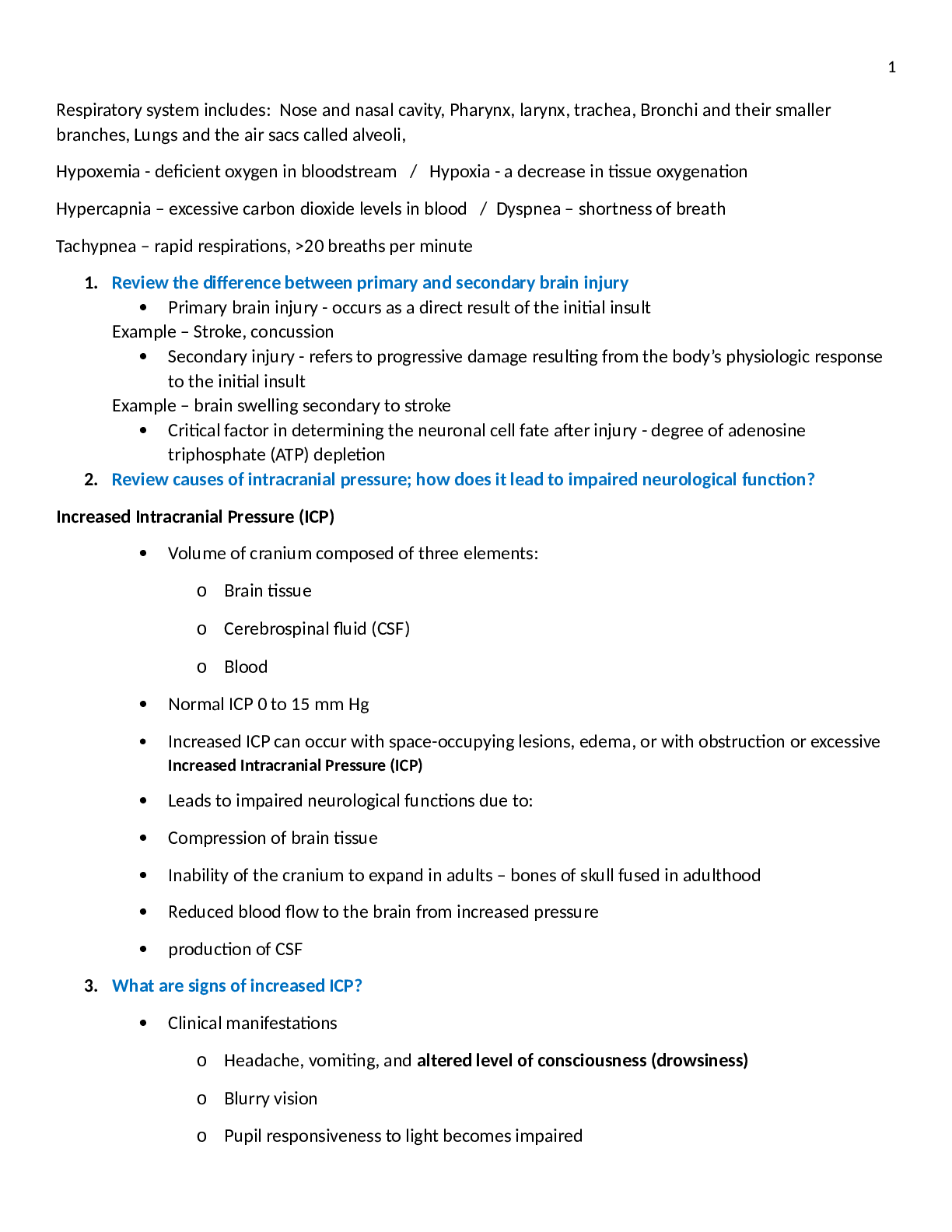
 M21.png)
